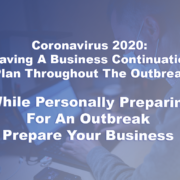 We see many common trends working with companies over the years that suffer high costs due to workplace injuries. One common thread is that in many of these companies you will see employees who have suffered multiple workplace accidents. At Metropolitan Risk we like to be proactive in our default response, assuming that these repeated incidents were not coincidence and that the aforementioned employee needs some special attention. By assuming the worst, which is that the employee needs additional training or counseling, you lower the probability of a future incident.
We see many common trends working with companies over the years that suffer high costs due to workplace injuries. One common thread is that in many of these companies you will see employees who have suffered multiple workplace accidents. At Metropolitan Risk we like to be proactive in our default response, assuming that these repeated incidents were not coincidence and that the aforementioned employee needs some special attention. By assuming the worst, which is that the employee needs additional training or counseling, you lower the probability of a future incident.
We suggest a 3 Step Protocol that effectively implements an intervention strategy to break the injury pattern before a serious injury occurs. Many times the situation that is creating the workplace injuries may be temporary like divorce, pressures at home, family issues etc. If you can pinpoint the possible source, you can break the injury pattern. This will take initiative on your part.
We suggest a three-part accident frequency intervention program designed for repeat offenders.
1) The program needs to be expressed formally in writing.
We suggest that you make it part of your safety manual or current safety program. If you don’t have one then you best jump on that A.S.A.P. or suffer huge fines from OSHA if you get audited or experience a serious workplace injury. The procedure needs to specify its purpose and define who would be considered a repeat offender so you don’t risk a discrimination allegation, as the employee may feel singled out. If the program is part of your Safety Manual, all employees are held accountable and dealing with repeat offenders becomes a non-issue.
2) Quantify and Identify all your repeat offenders.
We suggest reviewing your OSHA 300 logs and/or your loss runs to see who would qualify for the protocol. We encourage companies to not simply track employee injuries, but near misses as well. We suggest treating near misses as incidents, which would then trigger the protocol. Remember the goal is to AVOID your next workers compensation claim.
3) We suggest that you hold a confidential meeting with the employee to go over his incidents, near misses, and injuries.
The meeting should include their direct report supervisor, HR, and any other team leader or ownership that would convey the importance of the topic. In the meeting you should discuss what might be happening in their lives that is contributing to their lack of focus and procedure. Develop a mutually agreed upon 90 day action plan to be implemented in order to avoid future occurrences. Schedule periodic follow-ups so that they know you are serious about monitoring their improvement.
Examples of some action plans we have seen are:
- Re-training
- Modifying their responsibilities
- Weight watchers or nutritional counseling
- Transferring the employee to another job or project
- Assigning another direct report supervisor that can get the most out of them.
The important thing is that you are putting some thought in to the issue and not sitting back and waiting for the other shoe to drop. In our view, doing something is almost always better than doing nothing at all.
If you would like a SAMPLE COPY of our 3 Point Accident Frequency Improvement Protocol please click here. We know the program works in both Union and Nonunion shops across all industries. It works because management finds their accident frequency unacceptable, their personal safety and that of their co-workers of paramount importance, and is committed to helping their employee get “better.”








